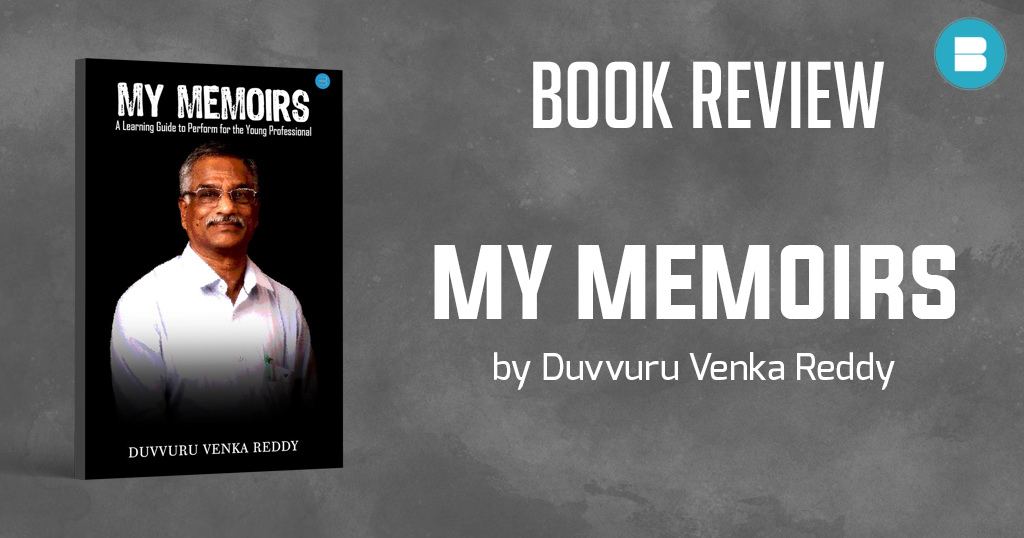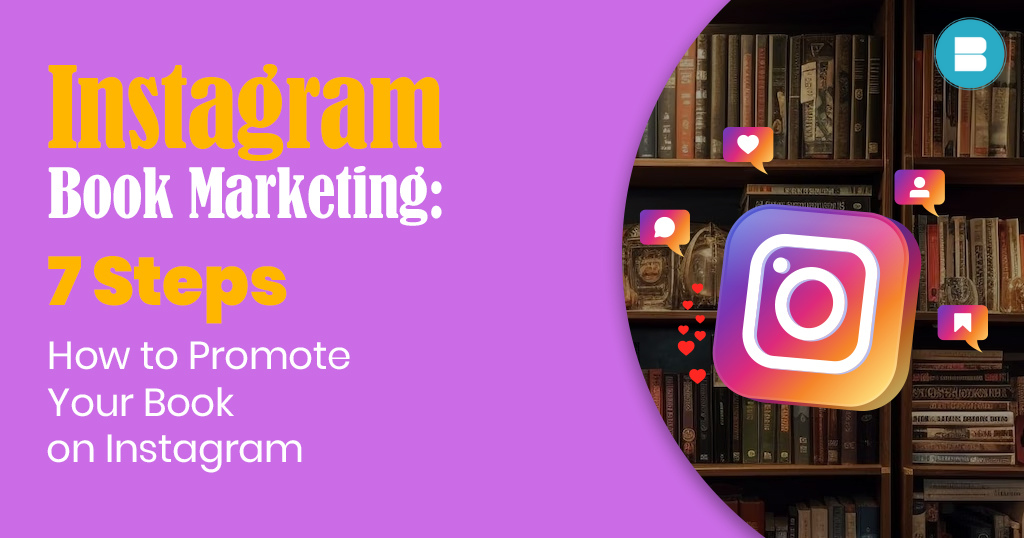
Instagram Book Marketing: 7 Steps on How to Promote Your Book on Instagram
Instagram has evolved as a significant channel for book promotion in the digital era, where readers and writers communicate on the virtual pages of social media. Instagram, often known as “Bookstagram,” provides writers with a unique opportunity to display their literary masterpieces because of its visually driven structure and devoted community of book enthusiasts. Read: Easy Ways on How to Promote your book on Goodreads. In this complete blog, we’ll go through seven practical stages to help you master the art of Instagram book promotion, from setting up your profile to cooperating with influencers. Step: Crafting Your Instagram Persona Step: Define Your Target Audience Step: Develop a Content Strategy Step: Embrace Instagram Stories and Reels Step: Engage with the Bookish Community Step: Harness the Power of Instagram Ads Step: Organise giveaways and contests – Crafting Your Instagram Persona Before you dive into book marketing, it’s crucial to create a compelling Instagram persona. Your profile is your authorial identity, so make sure it’s polished and engaging. Begin with a high-quality profile picture, preferably your book cover or an author photo. In your bio, introduce yourself as an author and give a sneak peek at your latest book. Don’t forget to include a link to your book’s website or Amazon page. Your profile should be an irresistible invitation into your literary world. – Define Your Target Audience It is critical to establish your target demographic before creating content that will resonate with readers. Understand your target readers’ demographics, hobbies, and reading preferences. Consider criteria such as age, gender, preferred genres, and book-related hobbies. Tailoring your content to the tastes of your audience will increase engagement and reach. You may also read: List of Nobel Peace Prize Winners in India – Develop a Content Strategy A well-thought-out content strategy is the backbone of successful book marketing on Instagram. Focus on creating visually appealing posts that align with your book’s theme, genre, and your audience’s interests. Share captivating images and videos, such as quotes, book covers, or glimpses of your writing process. Complement your content with engaging captions that spark conversations. Don’t forget to use relevant hashtags, including popular book-related ones like #Bookstagram, to expand your reach. You may also like: 10 Magical Books That Combine Christmas and Fantasy – Embrace Instagram Stories and Reels Instagram’s dynamic features, Stories and Reels, offer creative opportunities to engage your audience. Use Stories to share daily updates and behind-the-scenes moments and conduct interactive Q&A sessions about your book. Reels are perfect for showcasing your book’s highlights and reviews and crafting short, compelling videos. These formats keep your followers hooked and encourage interaction. You may also like: Top 10 Rhetorical Devices Every Writer Should Know – Engage with the Bookish Community Instagram is home to a thriving bookish community. Connect with fellow book lovers by participating in book-related hashtags and challenges, such as #ReadersofInstagram and #BookishCommunity. Engage genuinely with likes, comments, and direct messages. Building relationships with readers and fellow authors not only enriches your Instagram experience but also broadens your book’s reach. – Harness the Power of Instagram Ads To expand your book’s reach beyond your followers, consider running Instagram ads. Paid promotions allow you to target specific demographics, interests, and locations, ensuring your book reaches potential readers who are more likely to be interested in your genre. Instagram’s ad platform provides valuable analytics to track the performance of your campaigns. You may also like: Aravind Adiga Books of All Time | BlueRoseOne – Organise giveaways and contests Create excitement around your book by hosting Instagram giveaways and contests. Encourage users to participate by following your account, tagging friends, or sharing your post. Offer enticing prizes like signed copies of your book, exclusive merchandise, or personalised acknowledgements. Not only do giveaways boost engagement, but they also help you gain new followers. How do I promote my book on social media?To promote your book on social media effectively, start by identifying your target audience. Create engaging content related to your book’s themes and genre. Use relevant hashtags, collaborate with influencers, and run targeted ads. Engage with your followers through Q&A sessions, giveaways, and behind-the-scenes glimpses. Encourage reviews and shares to boost visibility. How do I start an Instagram account for my book?Begin by setting up an Instagram business account with your book’s title or author name. Use a high-quality profile picture and write a captivating bio. Share visually appealing posts related to your book, such as cover reveals, quotes, and author insights. Engage with the bookish community and use book-related hashtags to connect with potential readers. How do you promote on Instagram? On Bookstagram, focus on creating visually appealing posts showcasing your book. Engage with book lovers by participating in book-related challenges and discussions. Collaborate with Bookstagram influencers for reviews or features. Run book-themed contests or giveaways to create buzz. Use popular book-related hashtags and interact genuinely with followers. Should I make an Instagram account for my book?Yes, creating a dedicated Instagram account for your book is a great way to connect with readers and promote your work. It allows you to tailor content specifically to your book’s audience and build a community of enthusiastic readers. Does Bookstagram pay?Bookstagrammers can earn money through sponsored posts, collaborations, or affiliate marketing. When they partner with authors or publishers for promotional content, they may receive compensation or free books. However, earning on Bookstagram depends on follower count, engagement, and partnerships. How do writers get noticed on Instagram?Writers can get noticed on Instagram by consistently sharing engaging content related to their writing journey, books, and insights. Engage with the writing and book communities, participate in writing challenges, and use relevant hashtags. Collaborate with fellow writers and book influencers to expand your reach. How can I grow my Bookstagram fast?To grow your Bookstagram quickly, post regularly with high-quality content. Engage with followers and respond to comments promptly. Collaborate with Bookstagram influencers for shoutouts or features. Host giveaways to attract new followers. Use popular book-related hashtags and participate in book challenges. How do you become a Bookstagram influencer?Becoming a Bookstagram influencer requires…
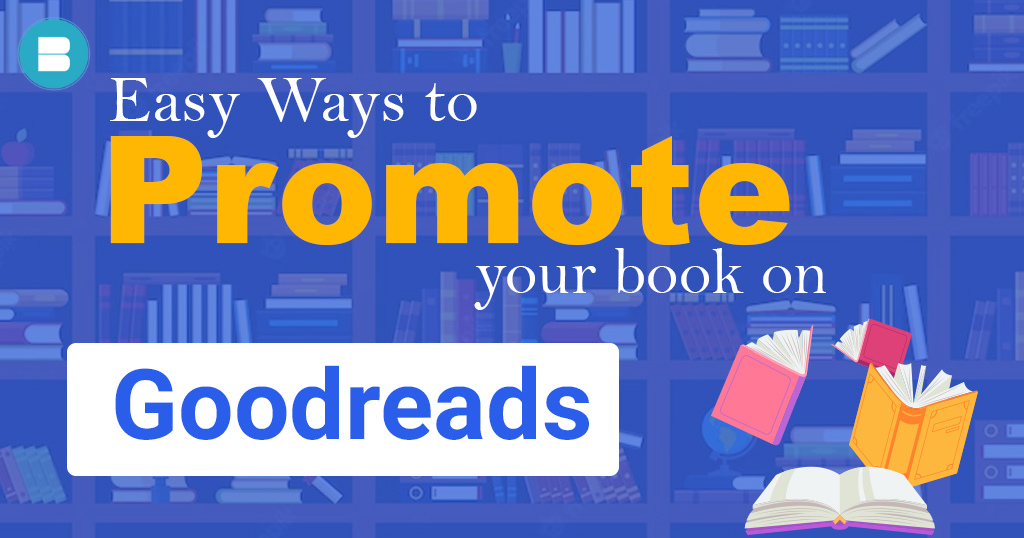
Easy Ways on How to Promote your book on Goodreads.
Are you a self-published author looking to boost the visibility of your book on Goodreads, the world’s largest social media platform for readers? Goodreads offers a plethora of opportunities for authors to connect with their target audience, gather reviews, and create a strong online presence. Read: Who are Alpha and Beta Readers: What Are They and Why Bother? In this comprehensive guide, we’ll explore easy and effective strategies to promote your book on Goodreads and make the most of this valuable platform. Create a compelling Goodreads author profile: Your author profile on Goodreads is your digital identity—the first impression readers get of you as an author. To get started with book marketing on Goodreads, create an appealing and professional author profile. Begin by becoming a Goodreads author, which allows you to claim and customise your profile. Select a high-quality, professional author picture that accurately portrays you. Your photo should reflect your personality as well as your professionalism. Create an intriguing biography that recounts your author’s narrative. Share your writing process, inspirations, and what readers may anticipate from your work. To connect with your audience, be genuine and sympathetic. Include hyperlinks to your author’s website and social media accounts. These links give readers quick access to explore more about you and your writing. Make sure your website and social media profiles are up-to-date and engaging. Your Goodreads author profile is your digital calling card, so invest time in making it captivating and reflective of your unique author brand. Add your books: Once your Goodreads author profile is set up, the next essential step is to add all your books to the platform. Adding your books to Goodreads ensures that readers can easily discover and engage with your work. When adding your books, pay attention to detail. Include high-quality book covers, accurate and compelling book descriptions, and all relevant details such as publication dates, genres, and book formats. Ensure that your book information is up-to-date and matches the details available on other platforms. By including your books on Goodreads, you make them accessible to millions of readers who use the platform to discover new titles and authors. Plus, having your books listed on Goodreads is a prerequisite for running giveaways and participating in various promotional activities on the platform. Encourage Reviews: Your Goodreads author profile is your digital calling card, so invest time in making it captivating and reflective of your unique author brand. Goodreads is a website that uses book reviews and ratings to help people find new books and writers. As an author wanting to market your work, you must actively encourage your fans to post book reviews. Read: What is Indie Publishing? And How to Publish your Book in 2023 On Goodreads, reviews serve several functions. For starters, they provide authors and potential readers with useful feedback. Honest feedback may help you realise what components of your work are appealing to your audience and where you can improve. Second, reviews add to the total rating of your book, which may have a big influence on its visibility on the site. Goodreads members are more likely to read books with higher ratings. It is critical to emphasise the value of honesty while promoting feedback. Authenticity is important on Goodreads, and people prefer reviews that represent honest opinions. Encourage your readers to offer their ideas, whether favourable or negative, since both sorts of criticism may help you improve as an author. – Organise giveaways and contests Leverage Goodreads Giveaways: Your Goodreads author profile is your digital calling card, so invest time in making it captivating and reflective of your unique author brand. Giveaways on Goodreads are a great weapon in your book marketing arsenal. These contests enable you to give away free copies of your book to Goodreads users in exchange for their participation. This may create a lot of interest in your book, especially if you’re prepared to give away a few signed copies or limited editions. Giveaways not only attract potential readers but also allow you to collect vital feedback and ratings. Participants are urged to provide a review after reading your book and receiving a copy. Positive feedback from freebies can increase the reputation and visibility of your book on the site. Make the most of Goodreads freebies by promoting them on your author profile, social media, and author website. The more exposure your giveaway receives, the wider your reach, and the greater the chance of attracting new readers. Join the Goodreads Author Programme: Your Goodreads author profile is your digital calling card, so invest time in making it captivating and reflective of your unique author brand. Goodreads has an author programme that allows writers to engage with their readers on a more personal level. You may create a sense of community around your books by participating in conversations, answering questions, and communicating with your readers. Engaging with your audience via the Author Programme can enhance interest in your work. Readers are more inclined to investigate and read an author’s works if they have a personal connection with them. It’s a chance to demonstrate your skills, provide insights into your writing process, and even provide sneak peeks into your forthcoming works. Building a strong presence as an author on Goodreads may result in a dedicated fanbase that anxiously awaits new releases and actively engages in conversations about your work. Promote Your Author Blog: Your Goodreads author profile is your digital calling card, so invest time in making it captivating and reflective of your unique author brand. If you have a blog or an author website, Goodreads might be a great place to promote your work. Share your blog entries in related Goodreads groups and participate in conversations about your niche or genre. Promoting your author blog not only generates traffic to your website, but it also demonstrates your expertise and love for your subject. It’s a chance to show your dedication to your fans by providing them with unique insights and information outside of your publications. Participating in the Goodreads community via your blog might help you connect…
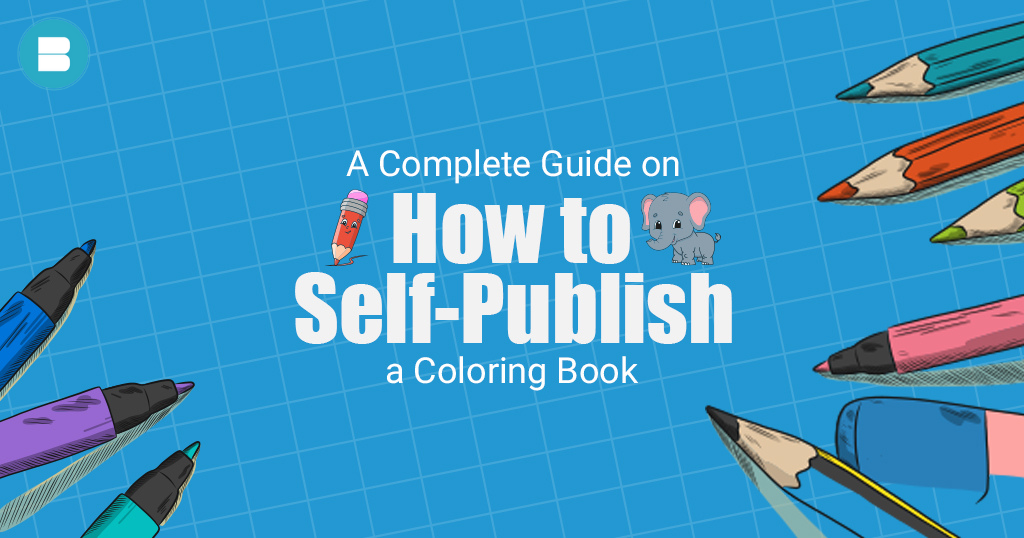
A Complete Guide on How to Self-Publish a Coloring Book.
Self-publishing a coloring book may be a rewarding and financially successful endeavour if you have a strong passion for art and want to share your creative abilities. Coloring books have been more popular among people of all ages, establishing themselves as a viable market segment. We will walk you through the process of self-publishing your own coloring book in this comprehensive tutorial. You may also like: 5 Act Structure: Definition, Examples and More Understanding the Coloring Book Phenomenon Before going into the complexities of self-publishing, it’s critical to understand the tremendous popularity and potential of coloring books. Coloring is more than just a fun pastime; it also has a number of therapeutic benefits. Many people have taken to coloring in recent years to unwind, relieve stress, and express their creativity. As a result, the market for adult coloring books has seen a significant increase in demand. Coloring crosses all age groups, providing a universal avenue for relaxation and self-expression. Aside from its nostalgic appeal, psychologists and therapists have recognised it as a helpful technique for mindfulness and stress reduction. Coloring helps people temporarily detach from the digital world by immersing themselves in a tactile and relaxing experience. Read: What is Indie Publishing? And How to Publish your Book in 2023. Adult coloring books, with their elaborate artwork and varied subjects, appeal to a wide range of interests. These books, whether they include mandalas, natural images, or pop culture references, serve as a blank canvas for customization and artistic discovery. As we explore the world of self-publishing coloring books, it’s important to remember the significant influence these creative outlets have on those looking for refuge, relaxation, and a way to connect with their inner artist. This comprehension not only feeds our ambition, but it also emphasises the possibility and significance of entering this booming sector. Choosing Your Coloring Book Theme Picking your theme This first step is the foundation of your entire creative endeavour. To make an informed decision, analyse your target audience and the precise niche you want to capture. Are you designing a colouring book for youngsters, adults, or a specific group with specific preferences? This question serves as the foundation for your topic choices. Children like bright and fascinating themes that are frequently centred on familiar characters, animals, or fanciful experiences. The idea is to pique their interest and inventiveness while also providing pleasurable colouring experiences. When it comes to adult colouring books, the options are far broader. The themes might range from elaborate mandalas to abstract designs that appeal to individuals looking for a creative challenge. Nature-inspired motifs, patterns, and even pop culture allusions such as Pokémon have all found a home in the realm of adult colouring books. The topic you choose sets the tone for the entire colouring book creation. It determines not just the substance but also the style, intricacy, and general attractiveness of your product. So, spend your time thinking about the topic that would most appeal to your target audience, since this is the first stage in creating a colouring book that will grab hearts and imaginations. You may also like: What is Plot Structure? Definition with Examples Creating Your Coloring Book The next exciting stage in self-publishing your colouring book is the actual creation of its pages, using a well-chosen topic as your guide. Your stage allows your artistic abilities to show, and there are two main ways to begin your creative adventure. Hand-drawn drawings are used in the first approach. Here, you may precisely construct each page using a pen, pencil, or brush. This tactile method gives your colouring book a personal touch, making it one-of-a-kind and real. It’s a popular option among individuals who like traditional illustrated artistry. Alternatively, you may use digital tools to create your own colouring book pages. This approach is versatile, allowing you to play with a wide range of styles, colours, and effects. Regardless of the approach you choose, ensuring that your designs are high-resolution is crucial. This is critical for print quality and digital dissemination. High-quality images provide clear, clean lines and brilliant colours, which improve the overall appearance of your colouring book. Furthermore, keep your target audience in mind while balancing detailed elements with user-friendly designs. Children may prefer simpler, more approachable pictures, but adults frequently desire the challenge and gratification that elaborate patterns provide. In short, the creative phase is when your idea comes to life and your chosen approach—whether hand-drawn or digital—must be consistent with your subject and appealing to your target audience. These pages will serve as a blank canvas for limitless ideas, making the creative process enjoyable. Legal Considerations and Copyright If you plan to include recognizable characters or images in your colouring book (e.g., Pokémon colouring pages), it’s crucial to understand copyright laws and obtain the necessary permissions or licenses. Failing to do so can lead to legal issues. Formatting Your Coloring Book When formatting your colouring book, consider the size, orientation, and page layout. Standard sizes like 8.5 x 11 inches or 8 x 10 inches are commonly used. Ensure that your pages are one-sided to prevent colour bleeding through to the next page. You can also include a title page and a brief introduction or dedication. You may also like: How to Publish a Book? | Publish Your Book | BlueRoseOne Choosing Your Publishing Platform Now, let’s explore how to publish your colouring book. There are various publishing platforms to choose from, both for physical and digital distribution. Amazon Kindle Direct Publishing (KDP): KDP offers an excellent platform for self-publishing both physical and e-books. You can easily create and upload your colouring book, set the price, and make it available to a global audience. KDP also provides print-on-demand services, eliminating the need for upfront printing costs. IngramSpark: IngramSpark is a popular choice for self-publishing physical books. It allows you to distribute your colouring book to bookstores, libraries, and online retailers worldwide. Keep in mind that you’ll need to handle the printing and shipping logistics. BlueRose Publishers: BlueRose Publishers is…
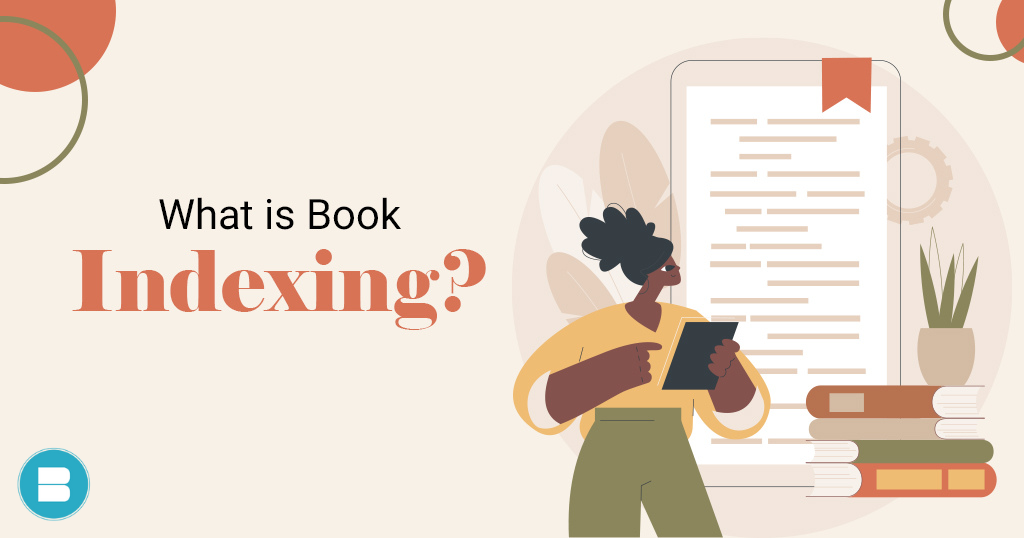
What is Book Indexing? Best Ways to Create Book Index.
When you pick up a book, whether it’s a dense academic tome or a page-turning fiction, you may not give much thought to the index. However, book indexing is critical in assisting readers in finding particular information inside the pages of a book. Read: List of 5 Best Suitable Fonts to Beautify Your Book. This blog article will explain what book indexing is, where you can find it, how it differs from other book features such as a glossary or table of contents, and why it is important. Let’s get started! What is book indexing? The act of compiling an alphabetical list of terminology, concepts, names, and themes mentioned in a book, together with associated page numbers, is known as book indexing. This list, known as an index, is a useful tool for readers who want to access specific information or references inside the book quickly. An index, in essence, serves as a guide to the book’s content, making it easier for readers to explore and discover what they need. Where is the index found in a book? The book index is typically located at the back of a book, right before or after any appendices or supplementary materials. It consists of an organised list of keywords or phrases, followed by the page numbers where those terms can be found within the book’s main text. You may also read: 10 Best Books on Writing Every Author Should Read What is the difference between an index and a glossary? While both an index and a glossary provide reference points for readers, they serve different purposes: Index: An index is a comprehensive list of specific terms and topics mentioned throughout the book, along with page references. It helps readers find the information they’re looking for within the context of the book’s content. Glossary: A glossary, on the other hand, is a list of specialised or unfamiliar terms used in the book, along with their definitions. It provides readers with explanations for terminology that might not be commonly understood. You may also like: How to Become a Writer: A Step-by-Step Guide for Authors You may also like: 100+ Adjectives That Start With N (With Examples & Definitions) What is the purpose of indexing? The primary purpose of book indexing is to enhance the usability and accessibility of a book. Here’s why indexing is essential: Facilitating Quick Reference:Indexing is a crucial tool for readers, as it expedites the process of finding precise information within a book. By organising topics, terms, and references alphabetically with page numbers, an index acts as a roadmap. This feature saves readers valuable time and effort, making it easy to pinpoint the information they need, especially in large or complex books. Whether for casual reading or targeted research, quick reference via indexing significantly enhances the overall user experience. Enhancing Research and Study:Book indexes are invaluable assets for researchers, students, and professionals. They serve as treasure troves of knowledge, allowing users to locate pertinent information for their projects, papers, or studies. Researchers can efficiently navigate vast volumes of content, while students can bolster their academic work by referencing specific details, all thanks to the meticulous organization provided by indexes. These tools transform books into valuable research companions. Improving Comprehension:Book indexing goes beyond mere convenience; it deepens comprehension. Readers can connect the dots between related topics and concepts by using an index to cross-reference entries. This aids in gaining a holistic understanding of the book’s content. By effortlessly accessing interconnected information, readers can grasp the context and nuances of the subject matter, making their reading experience more enlightening and enjoyable. In essence, indexing enhances the cognitive aspects of reading. You may also read: Literary fiction vs Genre Fiction: Definition & Examples What is the difference between an index and its contents? The table of contents (TOC) and the index serve different purposes: Table of Contents (TOC): The table of contents provides an overview of the book’s structure, listing its chapters, sections, and their starting page numbers. It serves as a guide to the book’s organisation and is usually located at the beginning. Index: As mentioned earlier, the index is an alphabetical list of terms and topics with page references, helping readers find specific informationke within the book. You may also like: How Book Editing Can Turn Your Story into a Bestseller? What is an index in a book? Let’s take a practical example to illustrate the concept of an index in a book: Imagine you’re reading a history book about World War II. In the index, you might find entries like: “D-Day, 78-85” “Eisenhower, Dwight D., 62-65” “Holocaust, 120-135” “Pearl Harbor, 42-47” These entries indicate that if you want to read about the D-Day invasion, you can turn to pages 78 to 85 for detailed information. Similarly, you can find information about Dwight D. Eisenhower on pages 62 to 65. You may also read: List of Top 10 Famous Ravinder Singh Books of All Time What is the purpose of an index in a book? The primary purpose of an index in a book is to provide readers with a valuable tool for efficient information retrieval. It enables readers to: Locate specific information quickly. Cross-reference related topics and concepts. Use the book as a resource for research and study. Enhance comprehension and understanding of the book’s content. In the end, book indexing is a sometimes ignored yet critical part of book design and printing. It acts as a link between readers and the information they are looking for inside the pages of a book. So, the next time you use an index to discover that important piece of information in a book, remember how important it is to making your reading experience more efficient and pleasurable. Frequently asked questions on Book Indexing Which comes first, glossary or index? In most books, the glossary typically comes before the index. This placement allows readers to familiarise themselves with key terms before using the index to search for specific information. However, the exact order may vary depending on the book’s layout and design. Where…
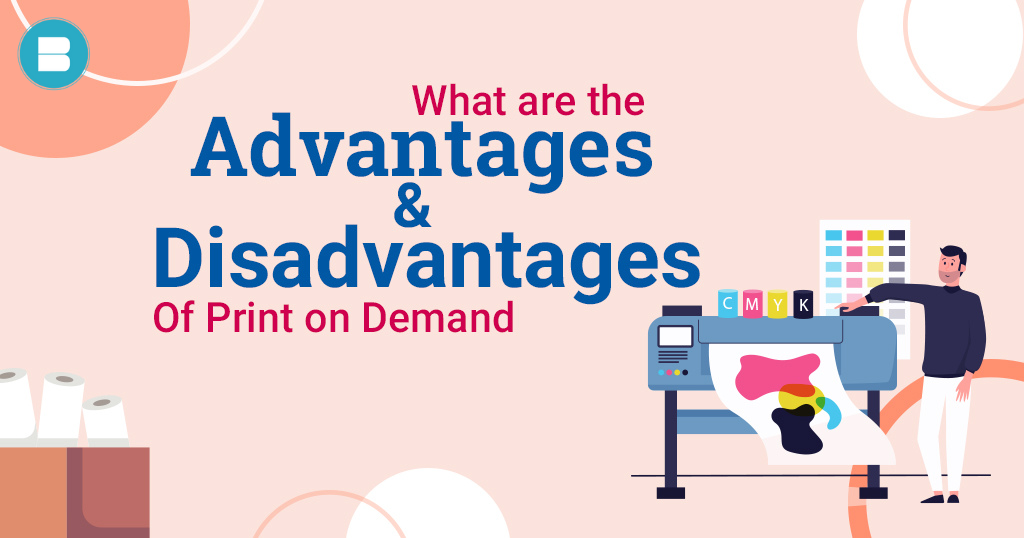
What are the Advantages & Disadvantages of Print on Demand (POD)
In today’s digital age, the landscape of printing and publishing has undergone a significant transformation. One of the notable innovations in this realm is print-on-demand (POD). This technology has revolutionized the way books, merchandise, and other printed materials are produced and distributed. Read: A Complete Guide on How to Self Publish a Book in the UK? In this blog post, we’ll delve into the advantages and disadvantages of print on demand, exploring how it has shaped the world of publishing and printing. What is print on demand (POD)? Print on Demand (POD) is a digital printing method that enables the production of printed goods in small quantities, often as they are required. In contrast to traditional printing technologies, which need massive print runs, POD allows for the production of single copies or small quantities of printed materials. This technology has found use in a variety of businesses, including book publishing, personalised products, and marketing materials Benefits of Print on Demand Cost Efficiency: One of the key benefits of print on demand is its low cost, particularly for small-scale or independent publishers. Traditional printing technologies sometimes need a hefty initial investment in huge print runs. POD, on the other hand, eliminates the requirement for mass printing, lowering both the upfront expenses and the danger of unsold inventory. Versatility: POD provides unrivalled versatility in terms of customization and edition control. Publishers and producers may simply modify their products, update content, and generate new versions without incurring significant costs. This flexibility is especially useful for authors and artists who are experimenting with new concepts or specialised markets. Less waste: Traditional printing processes can result in significant waste owing to the requirement of printing in big quantities to make the process cost-effective. POD, on the other hand, reduces waste by manufacturing only the precise number of copies required. This environmentally efficient strategy matches with sustainability aims and decreases publishing’s environmental imprint. Accessibility: Print on Demand democratises publishing by opening it up to a wider variety of artists. It enables self-publishing writers and independent artists to advertise their creations without the need for large resources or industry ties. This accessibility has enabled many people to contribute their own views and ideas. Global Distribution: POD uses digital technologies to make global distribution possible. Printed documents may be generated and distributed to consumers all over the world on demand, removing the need for expensive and logistically challenging international print runs. This facilitates the reach of businesses and innovators to a worldwide audience. You may also read: Author Podcasts vs Writing Workshops: Which is Better for You? The Disadvantages of Print on Demand Higher per-unit costs:While POD offers inventory management cost advantages, it has higher per-unit manufacturing costs as compared to traditional offset printing for big print runs. This can have an impact on the profit margins of companies that rely significantly on POD, particularly when selling lower-priced items. Limited Materials and Finishing Options:When compared to traditional printing processes, print-on-demand services may have limits in terms of accessible materials, paper quality, and finishing options. This can have an impact on the overall aesthetics and perceived value of printed products, especially luxury or speciality ones. Longer Production Times:POD, despite its efficiency, may have longer production times for individual orders compared to traditional offset printing, which can produce large quantities rapidly. This can be a drawback for businesses with tight delivery deadlines or high-demand periods. Quality Variability:The quality of POD products can vary depending on the equipment and technology used by different service providers. While many POD services maintain high standards, there is a risk of inconsistency in print quality, which may not meet the expectations of some customers. Is print-on-demand profitable? Print-on-demand profitability is determined by various factors, including the type of product, price strategy, and target market. POD provides a low-cost option for many independent producers, writers, and small enterprises to access the market and create cash with no financial risk. Profitability, on the other hand, is dependent on successful marketing, product quality, and competitive pricing. Print on Demand has transformed the printing and publishing environment by providing various advantages such as cost effectiveness, flexibility, decreased waste, accessibility, and worldwide distribution. These benefits make it a tempting option for independent producers, authors, and enterprises trying to advertise their products. Read: Top 5 AI-Powered Content Generator for Quick and Quality Writing. However, there are several drawbacks to print on demand, such as increased per-unit prices, fewer material selections, longer manufacturing times, and quality unpredictability. Individuals and organisations should carefully assess these advantages and downsides against their personal requirements and goals when deciding whether to use print-on-demand services. Finally, Print on Demand is a game changer in the printing industry, providing a dynamic alternative to traditional techniques that may empower a diverse variety of artists and businesses.
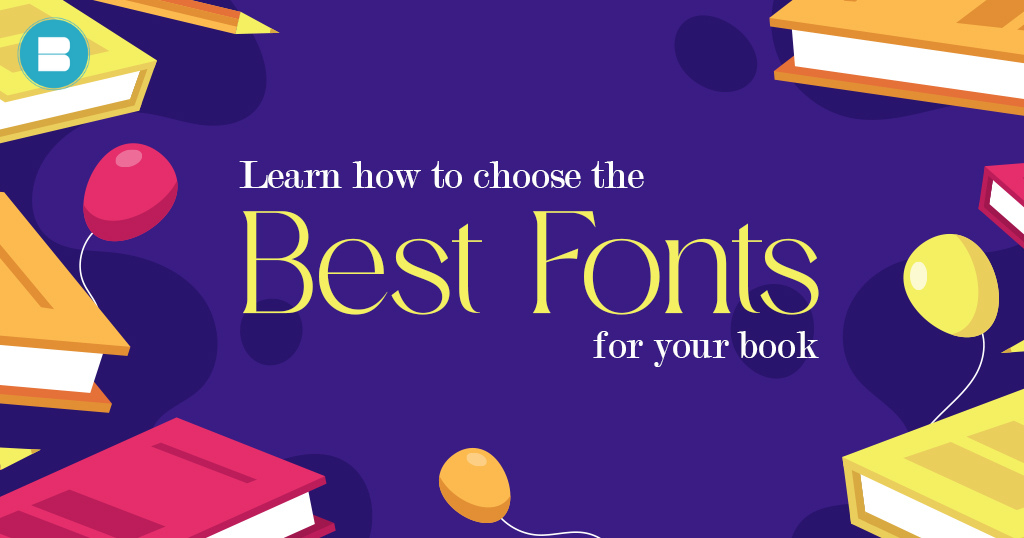
Learn How to Choose the Best Fonts for your book
Are you in the midst of writing and creating your book? Congratulations! However, one critical component of the creative process should not be overlooked: selecting the correct typefaces. The typefaces you choose for your book will have a big influence on its readability, attractiveness, and overall appeal. Read: What is Indie Publishing? Learn How to Publish Your Book in 2023. In this detailed tutorial, we’ll dig into the world of typefaces and offer advice on how to choose the ideal ones for your literary masterpiece. Which font style is best for books? The choice of font style for your book is a critical decision. It directly affects how readers engage with your content. Here are a few classic and widely accepted font styles for books: Serif Fonts: Serif fonts, like Times New Roman, Garamond, or Baskerville, are traditional choices for book text. They feature small lines (serifs) at the ends of characters, which aid in smooth reading. Sans-Serif Fonts: Fonts like Arial, Helvetica, and Calibri belong to this category. They lack the serifs of their counterparts, offering a clean and modern appearance. Sans-serif fonts are often used in chapter headings and subheadings. Book-Specific Fonts: Some fonts are specifically designed for books, such as Sabon, Minion, and Palatino. These fonts strike a balance between readability and elegance, making them excellent choices for book text. Modern Fonts: If your book has a contemporary or artistic theme, you may consider modern fonts like Futura or Century Gothic. However, use them sparingly and only in titles or headings. You may also like: 10 Magical Books That Combine Christmas and Fantasy What Font Is Best for Book Titles? Book titles are your chance to be creative and capture your readers’ attention. While you have more freedom here, readability is still essential. Consider the following fonts for book titles: Bold Serif Fonts: Fonts like Bodoni, Didot, or Playfair Display offer an elegant and impactful look for book titles. Their bold serifs create a commanding presence. Decorative Fonts: For specific genres or artistic books, decorative fonts like Lobster, Cinzel Decorative, or Pacifico can add a unique flair. However, use them sparingly and ensure they align with your book’s theme. Custom Fonts: Some authors opt for custom-designed fonts to give their book titles a distinctive touch. This option requires professional design but can result in a one-of-a-kind look. You may also like: Imposter Syndrome for Author: Steps to Overcome Imposter Syndrome What Is the Best Font and Size for a Book? The best font and size for your book’s main text depend on several factors, including your target audience and genre. However, here are some general guidelines: Font Size: A standard font size for books is typically 10, 11, or 12 points. Choose a size that ensures comfortable reading without straining the eyes. Larger sizes may be suitable for children’s books or large-print editions. Line Spacing: Maintain an appropriate line spacing (leading) to enhance readability. A common choice is 1.5 times the font size. Margins: Leave sufficient margin space around the text. This aids in preventing overcrowded pages and makes the reading experience more pleasant. Justification: Most books use left-aligned (ragged-right) text for improved readability. Avoid full justification, as it can lead to uneven word spacing. Hyphenation: Limit hyphenation, as excessive hyphens disrupt reading flow. Adjust the spacing and line breaks instead. You may also like: List of Top 10 Famous Durjoy Dutta Books of All Time What font is Harry Potter written in? The Harry Potter series, authored by J.K. Rowling, primarily uses the font “Adobe Garamond” for its book titles and chapter headings. This font was selected for its timeless and magical quality, which aligns with the theme of the series. Top 5 fonts to use as titles! Choosing the right font for titles is crucial to making them eye-catching and aligned with the theme of your content. Here are the top five fonts to consider for titles: Helvetica Neue: Helvetica Neue is a modern, clean, and versatile font that works well for titles. Its simplicity and readability make it a popular choice for various design projects. Bodoni: Bodoni is an elegant and stylish serif font known for its high contrast between thick and thin strokes. It adds a touch of sophistication to titles and headings. Playfair Display: Playfair Display is a classic serif font with a timeless and elegant appearance. It’s particularly well-suited for book titles, magazine covers, and luxury brand materials. Lobster: Lobster is a decorative, script-like font that adds a playful and casual vibe to titles. It’s often used for creative or informal projects to capture attention. Montserrat: Montserrat is a versatile sans-serif font with a modern and geometric style. It’s a popular choice for contemporary titles, especially in web design and branding. Remember that the choice of font should align with your overall design and the tone of your content. Experiment with different fonts to see which one best complements your project’s aesthetics and message. You may also like: What is Sitautional Irony? Definition, Examples and Tips for Writers The top 5 fonts to use for content! Here are the top five fonts to consider for content: Arial: Arial is a widely used sans-serif font known for its clean and straightforward design. It offers excellent readability in various text sizes and is suitable for both print and digital content. Times New Roman: Times New Roman is a classic serif font that is highly legible in printed materials. It’s often used in academic papers, books, and newspapers due to its traditional and professional appearance. Calibri: Calibri is a modern sans-serif font that comes pre-installed with Microsoft Office. It’s a popular choice for business documents and digital content due to its readability and contemporary style. Georgia: Georgia is a serif font designed for digital screens. Its slightly larger and rounded characters make it easy to read on screens, making it suitable for web content and e-books. Verdana: Verdana is another sans-serif font optimised for digital readability. Its wide spacing and clean lines make it an excellent choice for online articles,…
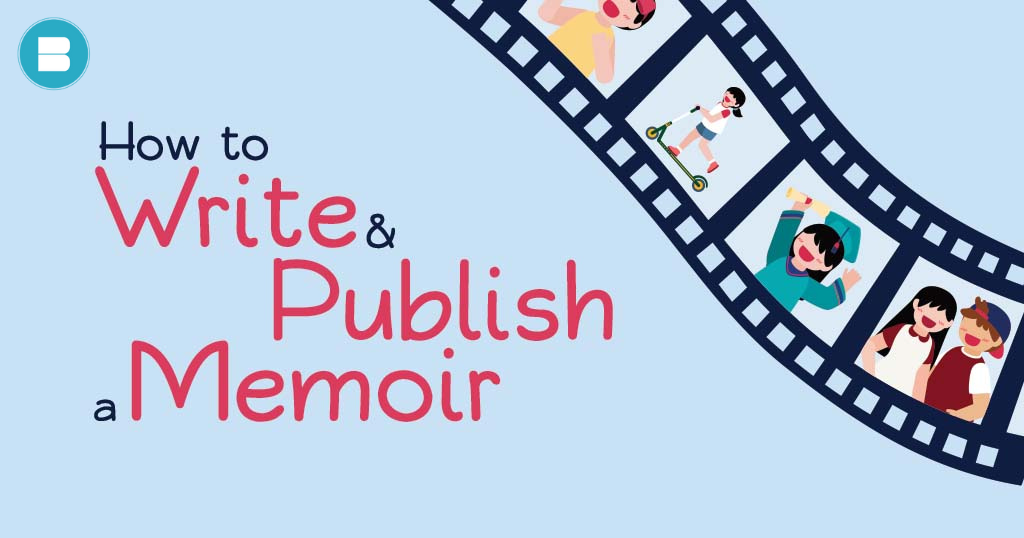
How to Write & Publish a Memoir in 2024?
Getting Started: Crafting Your Memoir Memoirs are strong literary works that allow people to share their own experiences, memories, and reflections with the rest of the world. Writing and publishing a memoir may be a rewarding venture, whether you’re an aspiring writer looking to capture your life’s journey or someone looking to leave a lasting legacy. Read: Alpha and Beta Readers: What are They and Why Bother. In this blog, we’ll look at how to write a fascinating memoir and how to navigate the world of memoir publication. Getting Started: Crafting Your Memoir Elements of a Compelling Memoir Writing Style and Techniques Navigating the Publishing Process Getting Started: Crafting Your Memoir Choosing Your Focus: A well-defined major subject or emphasis is the cornerstone of a fascinating memoir. This theme acts as the guiding thread that connects your story. Consider the crucial events, noteworthy experiences, or transforming lessons you want to share with your audience. This stage establishes the tone for your book, guiding the narrative and assisting you in crafting a story that connects with authenticity and purpose. Gathering Memories: Explore your past for raw materials for your book, such as memories, tales, and specifics. These fragments make up the mosaic of your life’s journey. Approach this approach with openness and curiosity, documenting not just the significant milestones but also the little events that have influenced you. Organise these pieces chronologically to guide your readers through your life’s history, or thematically to bring comparable events together for a more nuanced analysis. Creating Authenticity: The foundation of a successful memoir is honesty. Accept your flaws and communicate your feelings honestly, bringing readers into your inner world. Strive to portray your experiences, ideas, and feelings as they are, allowing your story to connect with real sincerity. This vulnerability not only strengthens your relationship with your readers, but it also adds depth and relatability to your narrative. By expressing your actual self, you urge readers to join you on a sincere journey of self-discovery and progress. Elements of a Compelling Memoir Captivating Opening: A great beginning is vital for capturing your readers’ interest. Begin your memoir with an enticing hook—a dramatic shift, a challenging topic, or a vivid description that establishes the tone. This first spark entices people to read on, eager to discover the trip you’re going to share. Character Development: Characters in your memoir should be vividly depicted. Investigate their personalities, goals, and roles within your story, whether it’s yourself or others. These rich character profiles give depth and authenticity to your tale, allowing readers to identify with the people who shaped your experiences. Emotional Resonance: Use the power of universal emotions to connect with your audience. Share your happy moments, struggles, victories, and insecurities. By expressing your emotions and experiences, you build an emotional connection that crosses personal borders, resonating with readers who have felt similarly in their own lives. Setting and Atmosphere: By clearly depicting the venues where crucial events happened, you may transport your readers to the heart of your tale. Invoke the senses and immerse readers in the scenario by painting a realistic picture of the surroundings. The environment you create adds depth and realism, which improves their grasp of the events and feelings you’re expressing. Theme and Reflection: Every memoir contains underlying themes or messages that allow for introspection and contemplation. Take time when you retell your experiences to dive into the deeper meanings and lessons they carry. Share your experiences with personal development and knowledge. By connecting your tale with bigger lessons, your memoir becomes a source of inspiration and connection for your readers, as well as a personal narrative. Writing Style and Techniques to Create a Memoir. Voice and Tone: The voice of your memoir is your individual literary fingerprint, representing your personality and point of view. It is the filter through which readers see your tale. Determine whether your tone of speech is reflective, funny, or emotional. Aligning the tone of your story with its mood improves reader connection. A thoughtful tone may be appropriate if your story is introspective. A funny tone may add appeal to a lighter memoir. A touching tone might be appropriate for a story about overcoming hardship. Experiment with numerous accents and tones to discover the one that best conveys the core of your tale. Dialogue: Dialogue brings your story to life by demonstrating real-world encounters. Use talks to highlight the complexities, connections, and conflicts of the characters. Dialogue provides realism by immersing readers at key times. Create discussions that are appropriate for the times and characters you’re portraying. This strategy not only increases reader interest, but it also adds a dynamic and relevant layer to your story. Show, Don’t Tell: Allow readers to experience your memoir’s emotions rather than merely hearing about them. Rather than stating, “I was nervous,” explain your quivering hands, rushing heart, and racing thoughts. This sensory immersion builds a visceral connection with readers, making your trip palpable. Incorporate rich pictures, textures, and fragrances into your writing. By using this strategy, you allow readers to walk in your footsteps, creating a more immersive and memorable reading experience. Pacing: The rhythm that takes readers through your story is known as pacing. Strive for balance by alternating between contemplative periods and exciting activities. Dwell on the pivotal events that created your story, digging into emotions and insights. Intersperse moments of activity and interaction to keep the energy going. Pacing is a tricky balance; if it is too sluggish, readers may lose interest, while if it is too quick, they may feel alienated. A well-paced memoir has a gratifying ebb and flow that keeps readers interested from beginning to end. Navigating the Publishing Process to Publish a Memoir. Publishing a memoir involves several steps, from writing and editing your manuscript to finding a publisher or self-publishing. Here’s a step-by-step guide on how to publish a memoir: Research Literary Agents and Publishers: Researching literary agents and publishers is a critical step in the journey to traditionally publish your memoir. Start by identifying professionals who…
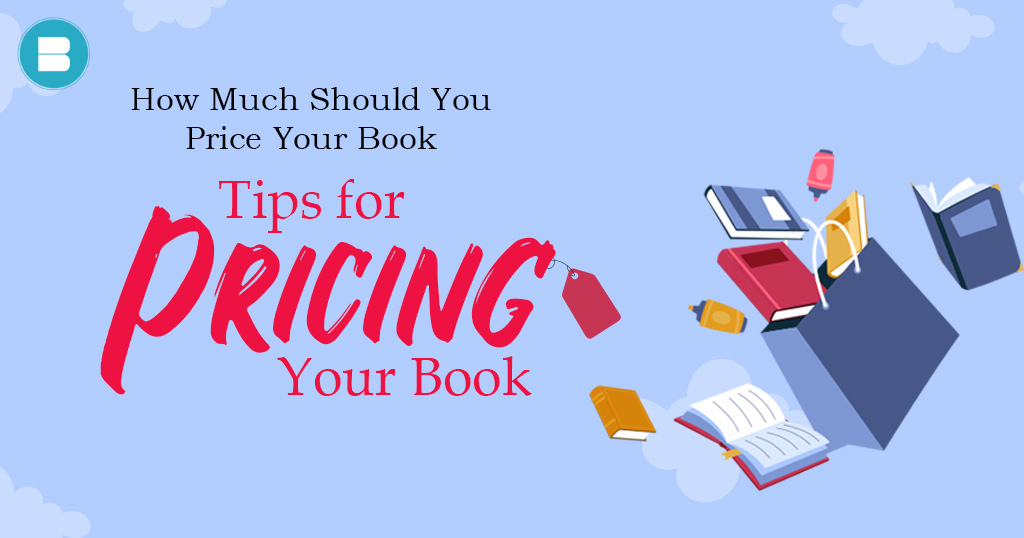
How Much Should You Price Your Book? Tips for Pricing Your Book
Are you a new or seasoned author with a work ready for publication? Congratulations on reaching this great stage in your writing career! While finishing your book is a huge accomplishment, selecting the correct price for your creation can be difficult. Read: Get to know how much does it cost to publish a book in India. How do you find the sweet spot between appreciating your work and making it accessible to readers? We’ll go into the complexities of book pricing in this article, looking at numerous elements that should affect your selection. So, let’s go on this adventure and learn how to price your book. Understanding the significance of book pricing. The price of a book is an important factor in determining its success. It is crucial, to influence both your prospective revenue and how readers evaluate your work. Setting an appropriate price is a tough balancing act. If you overprice your book, you risk alienating potential purchasers. Readers may be unwilling to spend on a book they believe is costly, limiting your sales and reach. Pricing your book too low, on the other hand, might be troublesome. While it may initially attract more consumers, it may convey a sense of poorer value. Readers may ask whether something is lacking in a book that is significantly less expensive than others in its genre. The objective is to find the sweet spot—the price that accurately represents your book’s quality and substance while being competitive in its genre. This equilibrium guarantees that you attract readers who are prepared to pay for the value they see in your work, eventually contributing to the success of your book and your revenues as an author. Read: A Complete Guide on How to Plan a Successful Book Launch in 6 Easy Steps. In essence, price is a strategic decision that determines how your book is received in the market, not merely a financial one. Factors to consider when pricing your book accordingly. Production Costs: The cost of manufacturing is a major component in determining the price of your book. This covers costs for editing, cover design, formatting, and printing (if physical copies are desired). Calculate these expenditures thoroughly to guarantee that you cover your investment while maintaining competitive pricing. Genre: The genre of your book might have a big influence on its pricing. Investigate how much readers anticipate to pay for books in your category. Romance novels, for example, are typically less expensive than specialty non-fiction publications. Book Length: The amount of pages in your book is important. Longer works frequently justify greater pricing, but shorter works may be priced cheaply. A 500-page historical epic, for example, may attract a greater price than a 100-page novella. Market Demand: Research the current market demand for books in your field. Is there a big demand for the stuff you’re providing? If this is the case, you may be allowed to charge a greater price for your book. Author Reputation: Established authors with a large following can sometimes ask for a higher price for their publications. Readers are prepared to pay a premium for a well-known author’s name and reputation. Tips for pricing your book effectively. Now that we’ve considered some of the key factors, let’s explore practical tips to help you set the perfect price for your book: Know Your Target Audience: Understanding your target readership is crucial. Are you writing for young adults, mystery enthusiasts, or business professionals? Tailor your pricing strategy to match your audience’s expectations. Competitive Analysis: Investigate the prices of books similar to yours in terms of genre, length, and content. This will give you a benchmark to work from. Your book’s price should be competitive within its category. Consider Ebook vs. Print: If you’re publishing both digital and print versions, your pricing strategy may vary. Ebooks are typically priced lower than print books due to lower production costs. Promotions and discounts: Consider running limited-time promotions or discounts to attract readers. This can be an effective way to boost initial sales and garner reviews. Value Proposition: Highlight what makes your book unique. If it offers exclusive content, expert insights, or a compelling story, it justifies a higher price. Pricing your book is a crucial decision that requires careful consideration. By taking into account factors like production costs, genre, and market demand, you can set a competitive and appealing price for your work. Read: Learn How to Promote your Book on Amazon: Budget-Friendly Hacks to Boost Sales. Remember that your book’s value goes beyond its price tag. A well-priced book, combined with effective marketing and a compelling story, can lead to a successful publishing journey. In the end, the art of pricing your book lies in striking a balance between valuing your work as an author and making it accessible to your readers. Happy Publishing! FAQs asked by writers on book pricing. What is a good price for a book? A good price for a book depends on several factors, including production costs, genre, and market demand. It should cover your expenses while remaining competitive within your category. How much should I charge for a 300-page book? The price of a 300-page book can vary widely, but it should reflect the value it offers. Research similar books in your genre and consider production costs when setting the price. What is the average price for a book? The average price for a book varies by genre and format. Paperback fiction books, for instance, may have an average price of $10 to $15, while hardcovers can range from $20 to $30. If we talk about the average price in INR, paperbacks often range from INR 150 to INR 300, while hardcovers can start at INR 300 and go up from there. What is a cheap price for a book? A cheap price for a book is subjective. However, ebooks are often priced lower, ranging from $2.99 to $9.99, while print books typically start at $9.99. Ebooks in India are often priced between INR 50 to INR 300, while print books can start at INR 150. How much does a good…
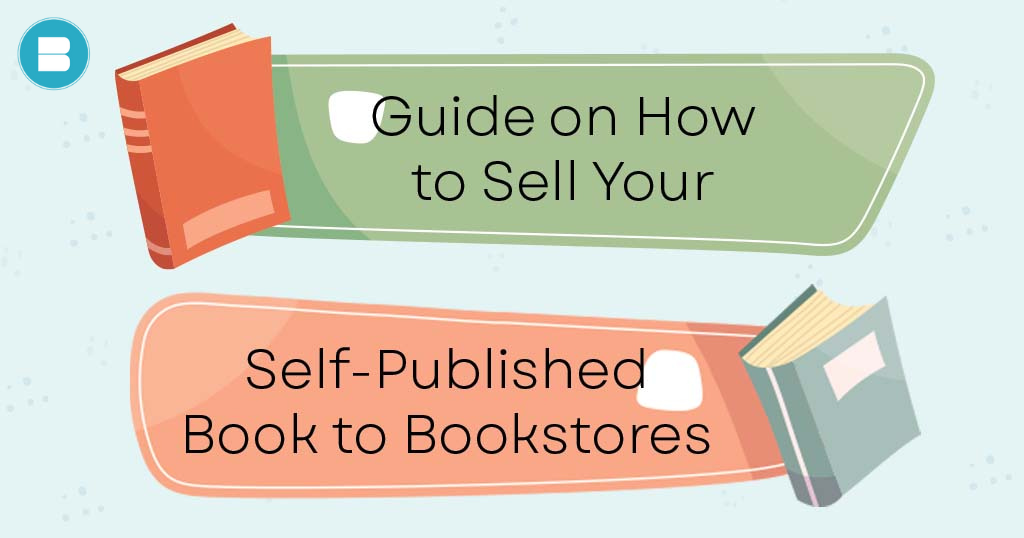
Guide on How to Sell Your Self-Published Book to Bookstores
As an aspiring author, you’ve poured your heart and soul into crafting your self-published book. You’ve navigated the intricacies of the writing process, meticulously edited your work, and embraced the journey of self-publishing. Now comes the exciting yet challenging phase: getting your book onto the shelves of independent bookstores. Read: How to Promote Your Book on Amazon: Budget-Friendly Hacks to Boost Sales In the past, this might have seemed like a daunting task, but times have changed. The landscape of publishing has evolved, and the doors to independent bookstores are more accessible than ever before. So, how do you navigate this new terrain and successfully sell your self-published book to these cherished community hubs of literature? Let’s dive into the guide on how to achieve just that. Embrace the shift in perspective Forge genuine relationships Understand Your Audience Discounted and returnable Prioritise Quality Seamlessly Shelvable Appropriate retail pricing Partnering with Reputable Distributors Support for Sell-Through Leverage online platforms Embrace the shift in perspective: Self-published books are no longer unfairly stigmatised due to a perceived lack of content and quality. The publishing scene has changed dramatically, thanks to the passion and devotion of self-published authors who have raised their works to challenge the standards of major publishers. As you celebrate your Amazon success, it’s vital to remember the obstacles that independent booksellers confront in a world dominated by internet behemoths like Amazon. In the face of digital supremacy, these bookshops, which are frequently local gems, seek to retain their relevance and build a sense of community. This recognition serves as the cornerstone of your strategy. Rather than just emphasising your book’s successes, customise your pitch to underline how your work might contribute to the distinct atmosphere of their store. Speak to the essence of your book—the story, its themes, and its potential to resonate with their customers. Example: Imagine you’ve authored a gripping mystery novel set in a small coastal town. While your book enjoys considerable success on Amazon, you recognise that independent bookstores offer an immersive experience that online platforms can’t replicate. As you approach these bookstores, your pitch could revolve around the camaraderie your mystery novel could foster among local readers. By focusing on how your book can enrich their store’s atmosphere, you tap into their need for compelling narratives that strengthen their community bonds. Forge genuine relationships: Cultivating ties with independent bookstores goes beyond a simple purchase. It’s a journey of mutual participation and support. Instead of relying on Google searches, take the initiative to get to know the bookshops. Engage with them by purchasing books from their shelf, not as an author but as a reader interested in what they have to offer. Encourage your family, friends, and followers to follow suit. This proactive participation strengthens your status as a literature aficionado who appreciates and respects the unique function that these businesses perform. Your dedication to building such connections underscores your commitment to the literary community at large. Independent bookstores aren’t just places to buy books; they are beacons of culture that curate experiences for readers. When your book aligns with their sensibilities, the relationship you’ve nurtured sets the stage for a more receptive reception. Example: Consider that you’ve penned a heartwarming children’s book that promotes kindness and empathy. Instead of limiting your engagement to selling copies, you frequent local indie bookstores, converse with the staff, and attend their events. Your enthusiasm for their space and your book’s alignment with their values create a genuine rapport. When you eventually propose stocking your book, your prior engagement distinguishes you from authors who merely seek shelf space. Understand Your Audience: Understanding the specific qualities of your target demographic is the basis of good bookshop placement. Investigate the demographics of a bookstore’s clientele before entering the owner’s office. Investigate the genres they specialise in, their clients’ reading tastes, and the activities they conduct. This knowledge allows you to personalise your pitch to their readership. Position your book as more than just a product—it’s an opportunity to add to their carefully chosen library and communicate with their readers. By demonstrating your understanding of their readers’ choices, you create confidence that your book will find a home on their shelves and will be a valuable addition to their products. Example: Imagine you’ve written a thought-provoking science fiction novel that explores the nuances of human existence. A local independent bookstore prides itself on promoting philosophical works that spark contemplation among its avid readers. Armed with this insight, you approach the owner and convey how your novel delves into existential themes. You highlight its potential to resonate with their customers, who seek intellectually stimulating narratives. This personalised approach not only demonstrates your understanding but also positions your book as a valuable asset to their collection. Discounted and returnable: The practicalities of retailing lie at the heart of successful bookstore integration. Offering a 55% wholesale discount and implementing a returnable policy showcases your willingness to collaborate effectively with independent bookstores. This practise is a standard within the industry, enabling bookstores to return unsold copies for credit. By aligning with this convention, you demonstrate your understanding of the bookselling ecosystem and establish a partnership that benefits both parties. Example: Assume you’ve written a gripping historical fiction work set in a lesser-known era. While you’ve amassed a sizable online following, you’d want to see your book on the shelves of local indie retailers. You make it financially viable for the bookshop to invest in your book by offering a 55% wholesale discount. Furthermore, providing a returnable policy ensures that the business will not incur the financial burden of unsold copies. This collaborative approach portrays you as a practical and helpful author, making your book an appealing option for bookstores. Prioritise Quality: Quality is paramount when it comes to capturing the interest of independent bookstores. Bookstore owners are discerning curators who seek books that not only meet industry standards but also stand out as exceptional works. Your book’s content should be meticulously crafted, offering a compelling narrative that resonates with…

